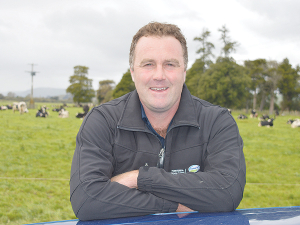Revamped Fonterra to be ‘more capital-efficient’
Fonterra chair Peter McBride says the divestment of Mainland Group is their last significant asset sale and signals the end of structural changes.
 Fonterra Co-operative Council chair John Stevenson says that rising costs have had a real impact on farmers’ bottom lines.
Fonterra Co-operative Council chair John Stevenson says that rising costs have had a real impact on farmers’ bottom lines.
Fonterra farmers have a message for their co-operative - they need to see consistently strong performance in both payout and returns from share ownership.
Fonterra Co-operative Council chair John Stevenson says that rising costs have had a real impact on farmers' bottom lines.
"We can see that with the latest DairyNZ breakeven milk price being above $8/kgMS," Stevenson told Rural News.
"Many farmers have reported to us that they have felt significant financial pressure over the last 24 months. Fonterra needs to execute on their revised strategy to ensure that our returns are well above our costs.
"Council will be keeping a keen eye on how Fonterra delivers on its six strategic devices."
Last week, Fonterra released a revised strategy, promising to deepen its focus on its high-performing Ingredients and Foodservice businesses to grow value for farmer shareholders and unit holders.
Revised targets are increasing average return on capital to 10-12%, up from 9-10%, a new dividend policy of 60-80% of earnings, up from 40-60%, while remaining committed to maintaining the maximum sustainable Farmgate Milk Price.
Chairman Peter McBride says the revised strategy creates a pathway to greater value creation, allowing the co-op to announce enhanced financial targets and policy settings.
"The co-op exists to provide stability and manage risk on farmers' behalf, while maximising the returns to farmers from their milk and the capital they have invested in Fonterra.
"Through implementation of our strategy, we can grow returns to our owners while continuing to invest in the co-op, maintaining the financial discipline and strong balance sheet we've worked hard to build over recent years."
Stevenson says early feedback from farmers indicates that they view the new targets positively.
He notes that delivery of these targets will see strong returns to Fonterra farmers alongside significant investment into growing the co-operative.
"Council views performance as the key to delivery of this strategy, and we will be monitoring and reporting on our view of how Fonterra execute against these targets."
Stevenson says a competitive milk price is critical for Fonterra to deliver on strategy, as there is strong competition for milk from all processors.
"A strong sustainable milk price is the most important number to our farmers, but business performance is very important as well.
"It is pleasing to see a focus in the strategy on Fonterra delivering the strongest farmer offering, including a stronger payout and improving farm cash flow."
Fonterra is also going ahead with plans to divest its consumer businesses in New Zealand, Australia and Sri Lanka.
The co-op says the process is ongoing and progressing well.
The National Wild Goat Hunting Competition has removed 33,418 wild goats over the past three years.
New Zealand needs a new healthcare model to address rising rates of obesity in rural communities, with the current system leaving many patients unable to access effective treatment or long-term support, warn GPs.
Southland farmers are being urged to put safety first, following a spike in tip offs about risky handling of wind-damaged trees
Third-generation Ashburton dairy farmers TJ and Mark Stewart are no strangers to adapting and evolving.
When American retail giant Cosco came to audit Open Country Dairy’s new butter plant at the Waharoa site and give the green light to supply their American stores, they allowed themselves a week for the exercise.
Fonterra chair Peter McBride says the divestment of Mainland Group is their last significant asset sale and signals the end of structural changes.